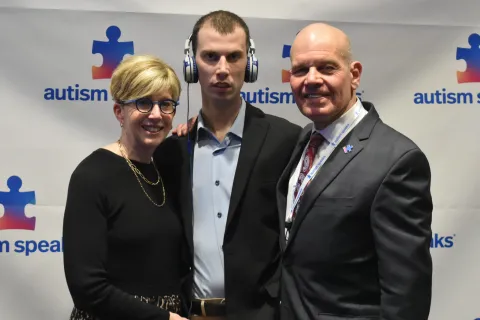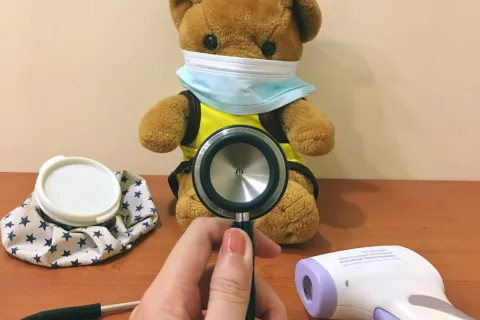Swim and water safety
The following is part of Autism Speaks Autism Safety Guide.
Water safety is critical for children and adults with autism. Many autistic individuals are drawn to water and some are unable to understand the dangers associated with it. Tragically, the leading cause of death among autistic people who wander is drowning.
Tips to help keep your autistic loved one safe in and around pools and water.
Start early
It is never too early to start teaching your autistic child the importance of water safety. Expose them at a young age so they can become knowledgeable of and comfortable around it. Use visuals like picture cards or social stories to teach rules related to water, and check out these water safety books recommended by the U.S. Product Safety Commission. Be on the lookout for a tendency toward or special interest in water and use them as teaching moments.
Sign up for swim lessons
The most obvious way to help prevent tragedy around water is to teach your child to swim. Many organizations offer lessons specifically for children with special needs. Remember that special needs swim lessons aren't just about swimming itself, but about how to be safe around water.
Many YMCAs offer special needs swim instruction, so this could be another option to consider. The program Swim Angelfish has videos with tips and strategies for teaching swimming on their YouTube page. Keep the lessons fun and interactive.
You can also search our Resource Guide for Swim and Water Safety programs. If there are none in your area, check at community swimming pools, local high schools and universities for an experienced swimmer, swim teach coach, certified lifeguard or special education teacher who can help with lessons. Wherever you take your child to swim, share our Pool and Water Safety for Lifeguards resource with the staff.
Emphasize the dangers of water
Beyond learning to swim, it is important for autistic individuals to learn water safety skills. Some children and adults with autism are capable swimmers, but their attraction to water can still lead them into dangerous situations - like a river with a strong current, a shallow pool or an unsafe temperature. Make sure the individual understands all of the dangers associated with water.
Take precautions to prevent wandering
If your child is drawn to water, take safety precautions to keep him or her away. If you have a pool or live near one, be sure the pool is gated and inaccessible. Put window and door alarms on your home so you know if your child has left unsupervised. Never leave your child unaccompanied or out of your sight near water.
Learn how to develop a safety plan in our Wandering Prevention Resources section of our Autism Safety Guide.
Spread the word in your community
Let your neighbors know about your child's tendency to wander and his or her attraction to water so they can be on high alert. A flyer with information specific to your child can be very helpful. You can use our example of a Neighbor Alert Letter to get started.
You may also want to alert first responders in your area. Fill out this Autism Elopement Alert Form to share information specifically about your child.
Check out our resources on safety in the autism community for more information.
For additional help, contact our Autism Response Team:
- English: 1-888-AUTISM2 (1-888-288-4762) | help@autismspeaks.org
- En Español: 1-888-772-9050 | ayuda@autismspeaks.org








